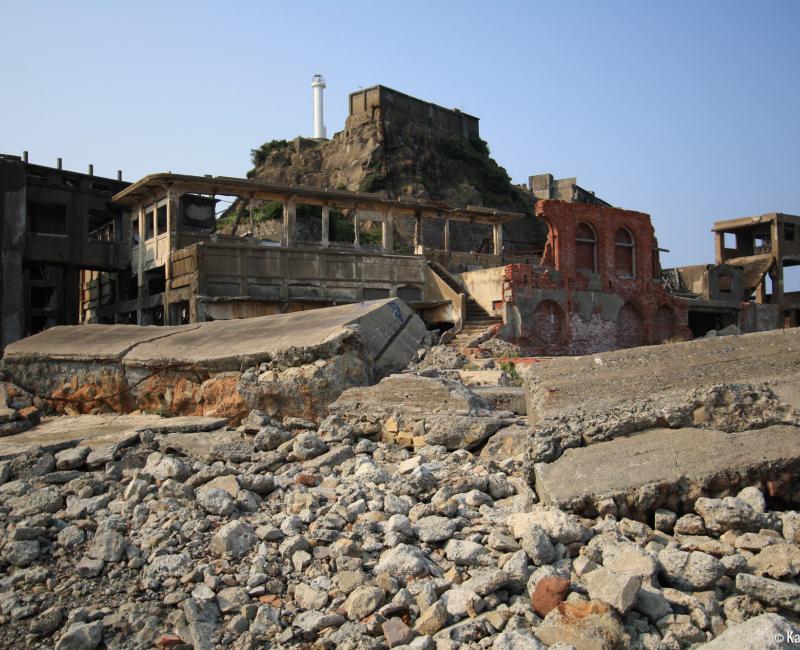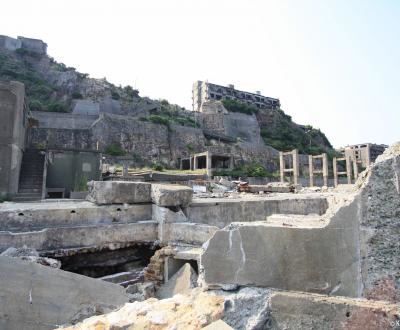Gunkanjima
Hashima the Forsaken Island
Gunkanjima, whose real name is Hashima, is a small Japanese island located about twenty kilometers off Nagasaki’s shores, in the west of Kyushu Island. Now a desert island, it shelters the ruins of a former mining town only accessible by guided tours.
Hashima’s site is a quite unique visit in Japan as it was emptied from its inhabitants several decades ago. The Ghost Island, now mainly called Gunkanjima (literally "Battleship island" due to its warship appearance), is located in Nagasaki prefecture, about twenty kilometers to the south-west of the eponymous city.
Hashima was initially a desert island until an important coal deposit was discovered in 1810, and the powerful Mitsubishi group settled a large workforce to exploit the coal mine. The island was enlarged many times between 1899 and 1931 to accommodate the numerous workers and their families. The superficies almost doubled to reach 6,3 hectares (~15 acres) on a 480 meters length and 160 meters width.
A fast development
Gunkanjima hosted all the infrastructures necessary to coal mining, as well as residential buildings, two schools, shops and services (restaurants, cinema, swimming pool, public bath, and gymnasium), an administrative district for the mine, a hospital and even a prison. Narrow alleys and stairways allowed circulation between the buildings of this little town. The shores of the islands were constituted by the docks and embankments necessary to boat traffic.
During World War II, Imperial Japan occupied Korea’s territory and sent 800 Korean conscripts and prisoners as forced laborers to Hashima. The island became akin to an outdoor prison, where runaways were tortured and more than 120 of them perished. In the 2000s, and despite South Korea’s opposition, the island was named in the UNESCO World Heritage List.

An abrupt withdrawal
After the war, Gunkanjima’s population grew quickly to reach 5,300 inhabitants in 1959. With 84,000 inhabitants per km², it was the highest population density in the world at the time. However, oil became the main source of energy in Japan as well, which impacted on the mine’s activity, that was definitely stopped in the 1970s. The last inhabitants were evacuated in April 1974.
Hashima was abandoned to the weather’s hardships and especially typhoons 🌀 that hastened the building’s decay. The prefecture deemed the island dangerous and closed it to the public until further notice. After major works funded by Nagasaki City to welcome tourists, the island reopened in April 2009. Several hundreds of thousands of people visit the island each year, and it even has its own mascot, named Gansho-kun.
For safety reasons, the official guided tour is limited to a southern itinerary, with restricted views. It is also a favorite exploration site for all urbex amateurs, in non-official tours. This kind of activity is naturally prohibited; however it is still possible to have a virtual and safe tour thanks to Google Street.
The incredible setting of Gunkanjima entered the popular culture as the decor for the James Bond series' Skyfall (2012) and a filming location for the movie Attack on Titan (2015).

